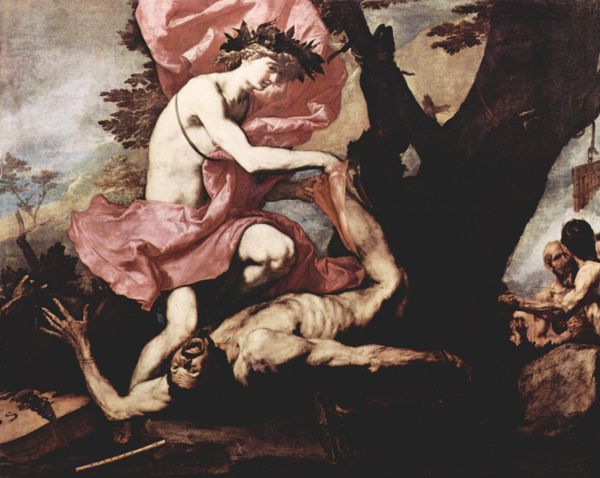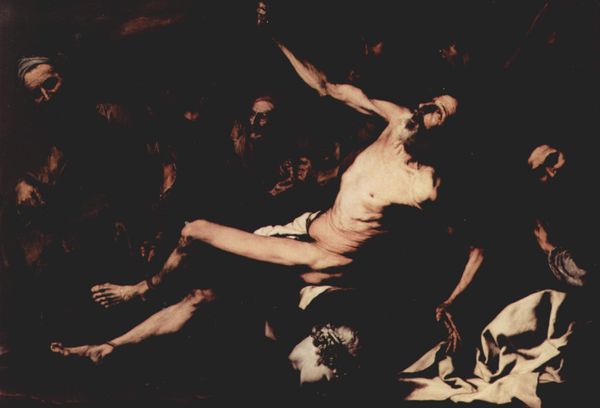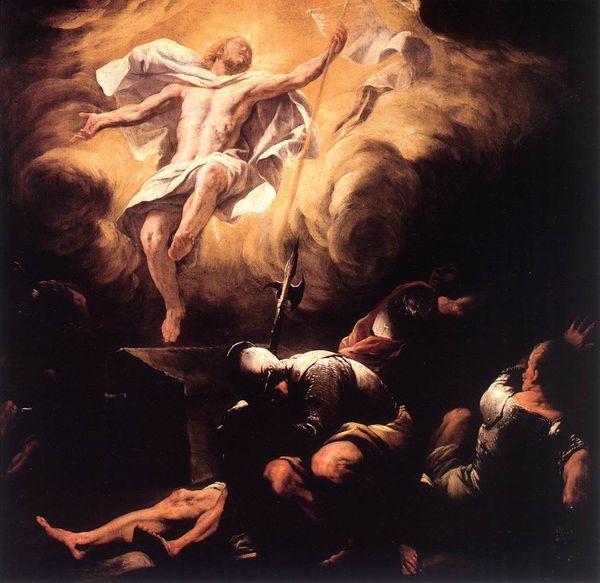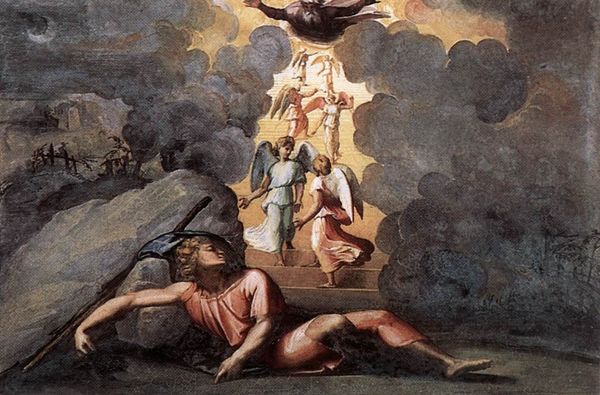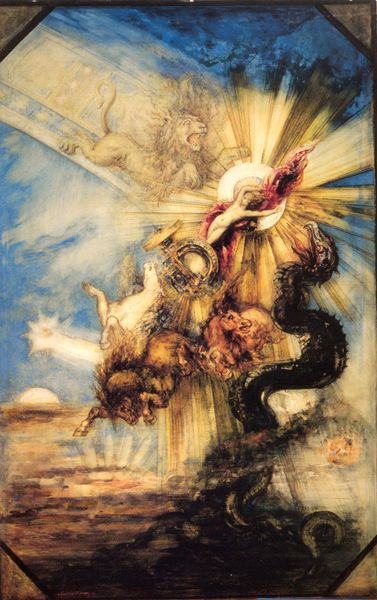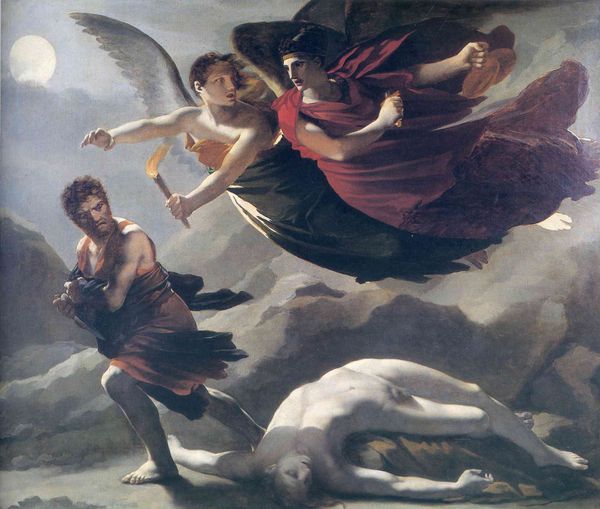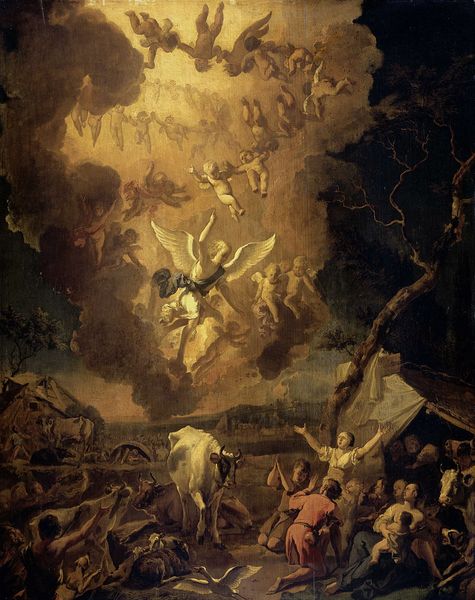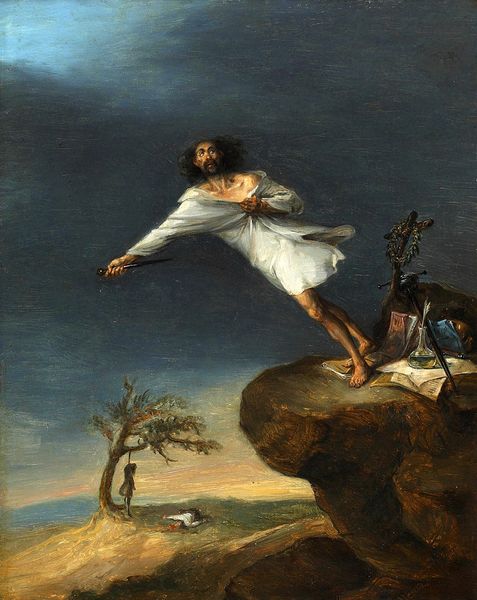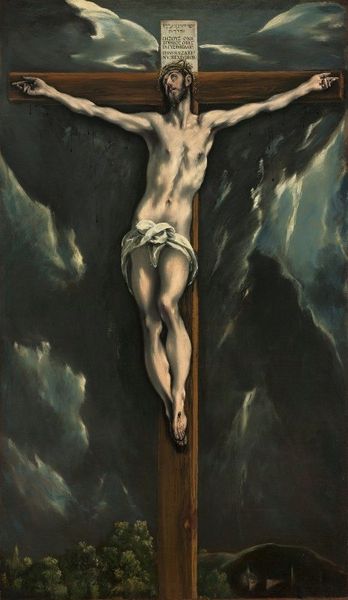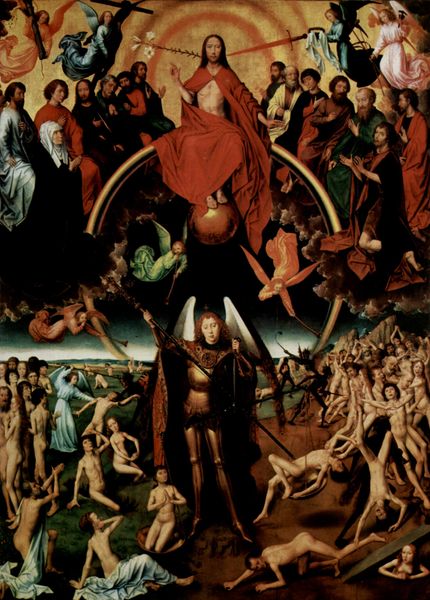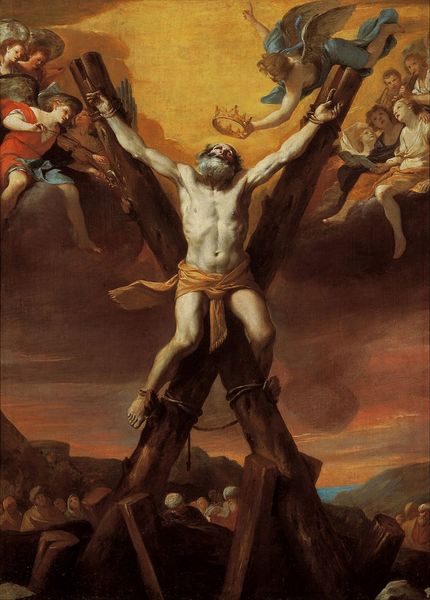
oil-paint
#
fantasy art
#
oil-paint
#
figuration
#
jesus-christ
#
christianity
#
human
#
history-painting
#
northern-renaissance
#
christ
Copyright: Public domain
Matthias Grünewald created "The Resurrection of Christ" as a panel of the Isenheim Altarpiece. Immediately, one's eye is drawn to the dramatic contrast between the dark, earthy tones at the bottom and the radiant, almost otherworldly figure of Christ. The composition is structured around a strong vertical axis, emphasizing Christ's ascent. Notice how Grünewald uses color to differentiate realms: the muted browns and grays of the earthly tomb against the vibrant reds, oranges, and yellows surrounding Christ. This isn't just a visual choice, it's a statement about transformation. The artist destabilizes traditional representations, moving away from naturalistic depictions towards an expressionistic style. Christ's figure is elongated, almost flame-like. This distortion serves to convey the miraculous nature of the event, challenging fixed notions of the human form. The vibrant colors and dynamic composition function aesthetically, but also engage with philosophical questions about mortality, transcendence, and the very nature of the divine. Grünewald prompts a re-evaluation of established values, inviting us to contemplate the transformative power of art itself.
Comments
No comments
Be the first to comment and join the conversation on the ultimate creative platform.
